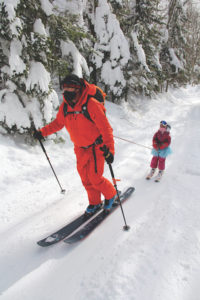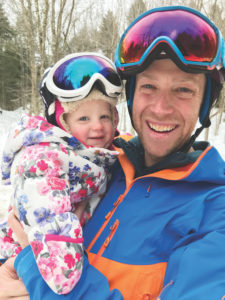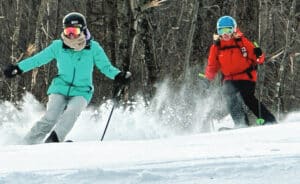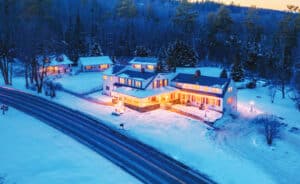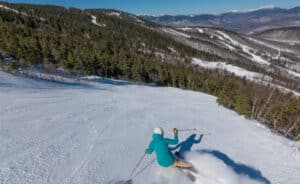
Chalk it up to nerves … or maybe he was distracted. But when backcountry ski and mountaineering guide Steve Charest proposed to his wife-to-be, Andrea, while skiing in the Jay Peak sidecountry some 15 years ago, he toppled over into a tree well.
Both were working at Petra Cliffs Climbing Center & Mountaineering School in Burlington, Vt., back then, so it wasn’t unusual for them to be spending time together on skis. It would be unusual if they weren’t. They met at Petra Cliffs, their first date was a day of skiing at Jay, and their honeymoon after being married in 2006 was spent ski mountaineering in the summer snow around Portillo, Chile.
The Charests recently celebrated eight years as co-owners of Petra Cliffs and are in the midst of an expansion that is doubling the size of the climbing gym, offices and yoga facilities in their new space in south Burlington. And, most important of all, their 3-year-old daughter is now part of the team, gaining experience each and every day as a skier on both the frontside rope tow-served groomers and exploring the Vermont backcountry with mom and dad.
So, when New England Ski Journal wanted to help its readers discover how they might get their own kids safely involved in backcountry skiing — whether it was even feasible with the equipment challenges, the terrain and skill challenges and, of course, the parenting challenges — what better expert to get ahold of for advice than Steve Charest.
